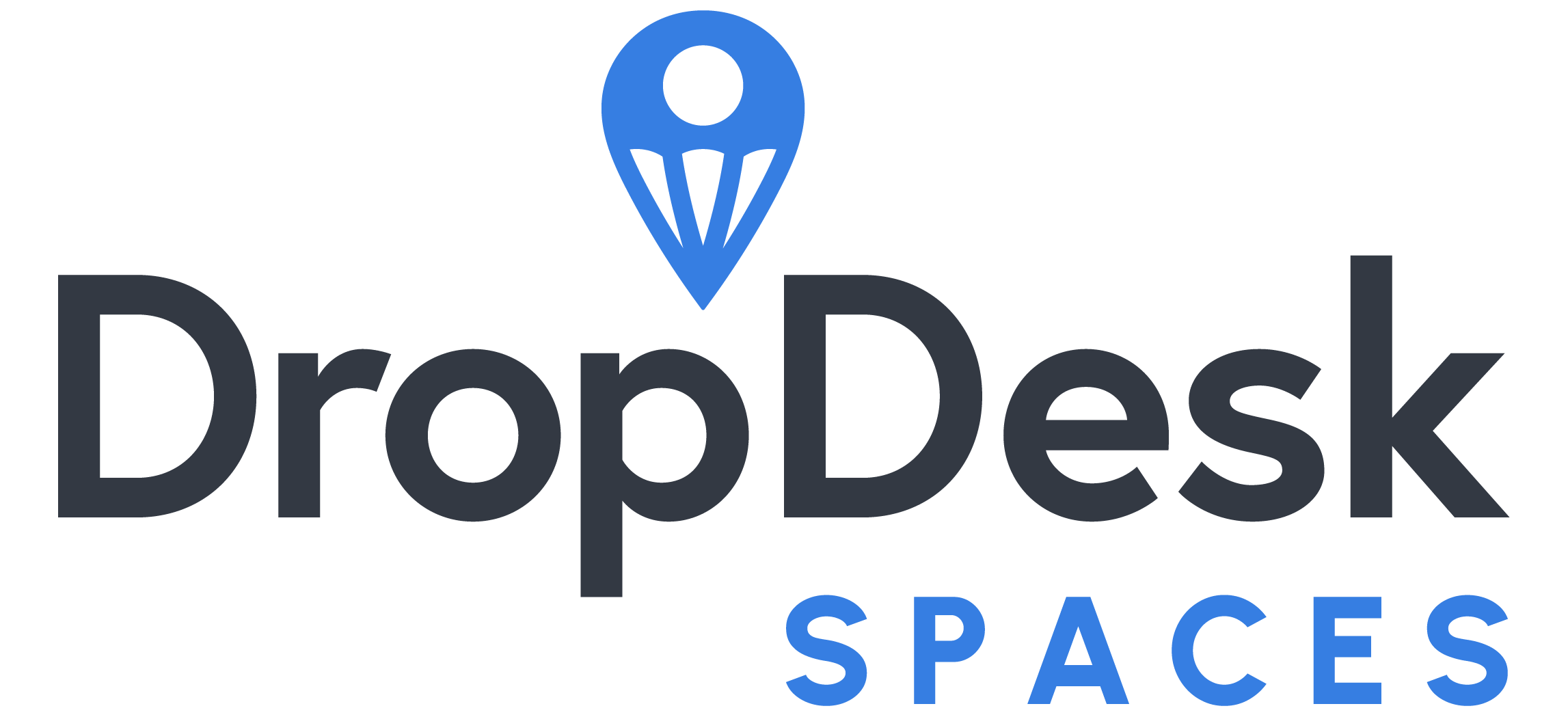The community of like-minded entrepreneurs that you will encounter at every coworking space is one of the major benefits to this type of working arrangement, and you’ll hear this again and again because it’s true.

If you’ve become intrigued with the concept of coworking, but you’re thrown off because there doesn’t seem to be much of a coworking community in your neighborhood, that doesn’t mean there isn’t interest.
There are plenty of people like you who would be interested in coworking if there was more of a community, and plenty more who have never even heard of coworking in the first place, but would be interested if they were more informed on the topic.
In any case, there are likely opportunities for you to take the helm and help lead the coworking revolution in your community. It could be your “Gandhi moment” to be the change you want to see in the world.
Tap Into the Existing Community
Even if there isn’t a dedicated coworking community in your city or town, there’s likely something that will have people who may be interested in coworking. Whether it’s a chamber of commerce, or Facebook groups for entrepreneurs in your area, or something else entirely, it can be very beneficial to brainstorm some existing communities that you can tap into.
Meetup.com is a good way to find smaller communities based around topics like startups, coding and development, makers, and more. All of these interests would be good candidates for finding people who could benefit from coworking, and collectively they can lay the foundation for your group.
Now, let’s talk more about laying that foundation, because it’s one of the hardest (and most important) steps…
Getting the Ball Rolling
What happens if you have an amazing space that you’ve spent months setting up perfectly, you’ve written notebooks filled with incredible ideas, you’ve got all of your social media setup with photos that showcase the coworking space…
But there’s just a big empty room with nobody inside of it? It’s going to be harder to attract people to take the plunge and join you when there’s nobody there yet.
It’s tough because you need people at your space in the first place to make it seem appealing to others, but it’s hard to get those first people. This also applies to the online aspects of your community like your social media profiles. People may be less likely to want to be one of the first followers on a page, but once there’s more social proof, they’ll click that follow button a lot more easily.
Once you have a bustling community, it’s much easier to convince people to join you…
So what can you do in the meantime?
To get things started, you’ll want to figure out how to market your coworking space. To get those first few members through the door, you might want to consider offering free or discounted memberships (Perhaps the first 6 months or year, it doesn’t have to be lifetime…) to some local people that you’d want to have on board.
Perhaps there’s an influencer in the local business community you could talk to? Have them come down, spend some time there, get the word out, snap some pics. Be careful with free and steeply discounted memberships, because they can also come back to bite you.
You want to attract more than just people who are looking for freebies and will bounce as soon as it goes up to full price. One way to do this is by offering a half-price yearly membership, or offering months 4-6 for free after someone has paid for months 1-3.
To be frank, unless there’s already a huge demand for coworking in your neighborhood that’s going unmet, it won’t be easy to fill the place at first, before you get the word out. You might not have people lining up at launch, but if you work to build a community even before the space is open, and raise awareness on what a coworking space is, you’ll be off to a head start and you’ll be able to minimize those slow days when you first open the doors.
Have Meeting Places (On and Offline)
Once you’ve tapped into the existing business community in your neighborhood, you’ll want to find a place to corral everyone. A Facebook group can work great for this since it allows everyone to interact and get to know one another more casually. You’ll be tapping into many different communities as you build your own,
One of the biggest benefits of coworking spaces is the ability to network with people socially, especially for people who usually work from home.
There are countless opportunities to connect with your growing community online, from Facebook, to Instagram using hashtags, to LinkedIn, to creating a message board or forum, a subreddit, a group chat in Whatsapp, a Discord, a Slack group, and plenty more.
On the one hand, you don’t want to splinter the community into too many places, but on the other hand, growing somewhat independent communities on different platforms can also offer a lot more exposure and steps towards the ultimate goal of your coworking community.
It’s good to have a way for members to introduce themselves so that new faces are immediately welcomed, and so that they have a reference to learn a bit about existing members and what everyone is all about in the community.
Have a Clear Goal
If you’re looking to gauge interest in order to open up a coworking space, or you just want to get to know other entrepreneurs near you, it’s a good idea to make the goal of your community clear in order to attract other people who are looking for the same things from a group.
This goal/mission statement will shape who you attract, how you’ll handle conflicts or disagreements down the road, how decisions are made that impact the community as a whole in the long and short term, and more.
It doesn’t have to be anything complex or revolutionary. Your goal can be to provide a comfortable, practical, and affordable place for people to work. Your goal can be to offer people office space in an upscale part of town that wouldn’t be able to access otherwise. Your goal could be to become the launching pad for startups that change the world. That’s up to you and your community to figure out.
Establish Limits and Boundaries
It’s easy to get into the mindset of trying to recruit as many people as possible when your community is new, but you need to find a balance between getting some warm bodies on board and actually recruiting the right people.
When we think about “the right people”, they can vary depending on what the goals are of your particular community, but generally speaking it means people that have common goals, positive attitudes, work well with and around others, are considerate, and won’t be a toxic presence in the group.
Having said that, some people are going to be at different stages of their development, but a willingness to learn, listen, contribute, and accept feedback can help overcome certain other shortcomings.
Don’t Forget Why You Got Started
If you look back a year or two from now and see a bustling community, be very mindful to avoid becoming complacent or taking it for granted.
There are certain charms in smaller communities that may appeal to your initial members, and as you grow, it’s easy to forget about the things that got you there in the first place. There’s a balance between growing and changing and staying fresh while maintaining the heart and soul of your community.
Also, members like to see progress. It’s important to keep the space fresh, well-maintained, and to find a way to convey progress and growth. While everyone is hard at work growing their own projects, it can be very special when the environment around them also feels like it’s moving forward.
This is where a mission statement and a core set of values can come in very useful.
Giving Back to the Community
Try to see your coworking community as something that exists inside of a larger community, including other brick and mortar businesses nearby and residents of the neighborhood.
If you’re in a position to do so, it can be hugely beneficial to make yourself visible at community events like farmer’s markets or night markets (which are filled with local businesses). Perhaps there are opportunities to sponsor local events, too?
You could organize a tech drive, which is like a food drive or a book drive except for older pieces of technology that are just collecting dust in the closets of your community members. Many local schools will have extra curricular programs for kids who are interested in technology, computers, audio/video, and they are often run by volunteers with minimal to no funding.
Not only does this help out the kids by giving them tech they can use to learn and experiment, but it brings together your own community with a benevolent common goal. This is one of many intangible things that can help get the word out about your coworking space, while also giving existing members a sense of pride and accomplishment.
Engaging with the rest of the community around you and organizing them for worthwhile causes is a great way to show people that you’re the real deal, and that your coworking space is the type of group they want to belong to.
Is It Worth It?
If there isn’t much of a coworking community alive in your city yet, is it worth it to be the one who strikes out on a new path?
It sure can be, but as with any entrepreneurial pursuit, it’s going to take a lot of hard work, dedication, creativity, and even a little luck here and there.
When taking into account all the benefits of coworking that you’ll likely be discussing often as you grow your community, don’t forget that you’ll also be benefiting from the space and networking with the people who use it.







